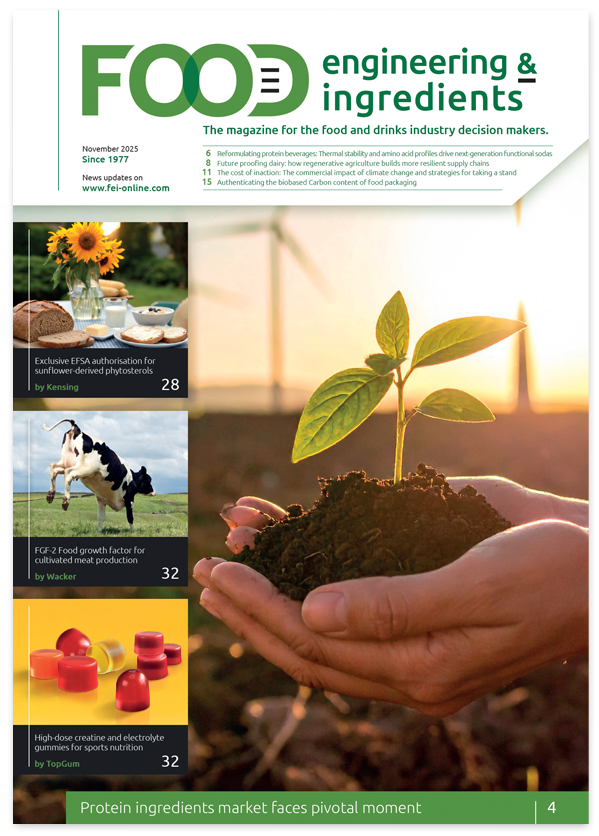Consumer behaviour data reveals critical food safety challenges and regulatory gaps
The United Kingdom’s Food Standards Agency’s latest Consumer Insights Tracker exposes concerning trends in food safety behaviours, with two-thirds of UK consumers eating food past use-by dates to save money, while emerging technologies like cell-cultivated meat face significant consumer resistance despite growing scientific development.
Food affordability drives risky consumption patterns
The economic pressures facing UK households have created a concerning trend in food safety compliance. The Food Standards Agency’s (FSA) quarterly tracking data reveals that 66% of consumers reported eating food past its use-by date in June 2025, representing an increase from 63% in May. This behaviour has now become the most reported money-saving strategy, surpassing other cost-cutting measures.
“The most reported money saving behaviour in June 2025 is eating food past its use by date (66%), up from 63% in May,” the FSA researchers documented. This trend coincides with 22% of respondents expressing worry about household food affordability, maintaining consistent levels observed throughout the spring of 2025.
The data indicates a systematic shift in risk perception among consumers. Beyond use-by date violations, 63% reported consuming leftovers stored in refrigerators for more than two days, while 55% reduced their overall food purchases. These behaviours represent direct challenges to established food safety protocols and microbiological risk management principles.
From a food science perspective, these consumption patterns raise significant concerns about foodborne illness transmission. Use-by dates represent microbiological safety thresholds based on predictive modelling of pathogen growth, particularly for ready-to-eat products with extended shelf lives. The widespread disregard for these safety parameters suggests a disconnect between economic necessity and scientific risk assessment.
The tracking methodology employed by the FSA, utilising YouGov’s 400,000-member panel across England, Wales, and Northern Ireland, provides statistically robust evidence of these behavioural shifts. The consistency of approximately 2,000 monthly respondents allows for reliable trend analysis in consumer food safety practices.
Cell-cultivated products encounter consumer resistance despite technological advancement
The FSA’s investigation into cell-cultivated meat acceptance reveals significant barriers to market penetration despite increasing technological sophistication. Awareness of “lab-grown meat” terminology reached 79% in April 2025, representing a substantial increase from 72% in October 2024. However, consumer acceptance remains limited.
The data demonstrates a clear preference gap: 44% of respondents believe cell-cultivated meat should not be available for sale in the UK, compared to 32% supporting market introduction. This resistance extends to personal consumption, with 57% expressing unwillingness to include cell-cultivated products in their diets, substantially exceeding the 28% willing to consume such products.
Consumer concerns centre on safety perceptions and naturalness concepts. The research identified that 53% of respondents cited safety concerns as their primary reservation about cell-cultivated meat, while 49% described the technology as “unnatural.” These perceptions contrast sharply with the regulatory framework development and scientific advancement in cellular agriculture.
Interestingly, consumers recognised potential benefits, with 44% acknowledging animal welfare advantages and 36% identifying sustainability benefits. This suggests informed awareness of the technology’s theoretical advantages, despite personal reluctance to adopt these products.
The confidence in regulatory oversight presents mixed results. Only 35% of respondents agreed that “regulation will prevent unsafe cell-cultivated meat being sold in the UK,” indicating substantial scepticism about regulatory efficacy. This finding has profound implications for food safety communication strategies and regulatory approval processes.
The FSA’s longitudinal tracking demonstrates remarkable stability in these attitudes. Between October 2024 and April 2025, support for cell-cultivated meat availability remained essentially unchanged (31% to 32%), while willingness to consume increased marginally from 26% to 28%. This stability suggests deeply entrenched consumer attitudes that may prove resistant to educational interventions.
Cannabidiol consumption reveals regulatory knowledge gaps
The tracking data on cannabidiol (CBD) products exposes significant gaps in consumer knowledge and regulatory communication. Approximately 11% of respondents reported CBD consumption within the previous six months, maintaining consistency with December 2024 levels. However, the data reveals concerning uncertainty about dosage and safety parameters.
Among CBD consumers, 42% reported not knowing their daily consumption levels, while only 32% consumed the 1-10mg range. This uncertainty represents a critical regulatory challenge, particularly given the FSA’s ongoing evaluation of CBD safety thresholds and maximum daily consumption recommendations.
The consumption pattern data indicates CBD drinks (63%) and oils (60%) as the predominant product categories, with oils showing the highest frequency usage pattern. Sixteen percent of oil users reported daily consumption, suggesting potential for cumulative exposure effects that require careful monitoring.
Consumer decision-making regarding appropriate dosing relies heavily on product packaging instructions (54% of users), though 30% reported monitoring physiological effects to adjust consumption. Only 6% consulted the FSA’s public CBD product database, indicating limited awareness of official safety resources.
The regulatory implications extend beyond individual consumer safety to broader public health surveillance. The substantial proportion of consumers unable to quantify their CBD intake complicates exposure assessment and risk evaluation processes essential for evidence-based regulatory decisions.
Regulatory trust and communication effectiveness under scrutiny
The FSA’s institutional credibility demonstrates moderate improvement, with trust levels among knowledgeable consumers reaching 64% in June 2025, following a peak of 66% in May. This represents continued recovery from the December 2024 low of 57%, indicating effectiveness of recent communication strategies.
However, food safety topic awareness reveals selective engagement patterns. Product recalls achieved the highest visibility (31% awareness), followed by food hygiene ratings (29%) and allergen information (24%). Lower awareness levels for food storage guidelines (13%) and contamination incidents (10%) suggest opportunities for enhanced safety communication.
The data indicates consumers primarily access food safety information through traditional news media (52%), followed by social media platforms (36%) and personal networks (24%). This distribution pattern has implications for regulatory communication strategy development and scientific information dissemination.
Consumer concern priorities remain dominated by economic factors, with food prices maintaining their position as the primary worry across the survey period. The addition of nutritional concerns (salt, sugar, fat, calories) to the April tracking demonstrates the FSA’s responsiveness to emerging public health priorities.
The consistent methodology employed throughout the tracking programme provides reliable baseline data for evaluating policy interventions. The quota sampling approach, weighted for demographic representativeness, ensures findings reflect population-level trends rather than convenience sample artefacts.
Implications for evidence-based food policy
The Consumer Insights Tracker data presents food scientists and regulators with complex challenges requiring integrated responses. The intersection of economic pressure and food safety compliance demands policy solutions that acknowledge financial constraints while maintaining microbiological safety standards. The cell-cultivated meat findings suggest that technological advancement alone will not drive consumer adoption. Regulatory frameworks must incorporate comprehensive safety communication strategies that address both rational safety concerns and emotional responses to technological innovation.
CBD regulation requires immediate attention to dosage uncertainty and consumer education gaps. The substantial proportion of users unable to quantify consumption levels represents a critical data void for exposure assessment and safety evaluation.
The FSA’s tracking methodology provides a robust foundation for evidence-based policy development. The consistent sample sizes, demographic weighting, and longitudinal design enable reliable trend identification and policy impact evaluation.
Future research priorities should include investigation of socioeconomic factors influencing food safety compliance, development of effective communication strategies for emerging food technologies, and enhanced consumer education regarding regulatory safety resources. The integration of behavioural science insights with food safety research will prove essential for addressing the challenges revealed by this comprehensive consumer analysis.




